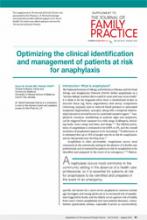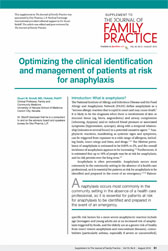Article Type
Changed
Tue, 05/21/2019 - 12:22
Display Headline
Optimizing the clinical identification and management of patients at risk for anaphylaxis
Sponsor
This supplement was sponsored by Dey Pharma, L.P. Medical Exchange Internationa…
Article PDF
Issue
The Journal of Family Practice - 59(8)
Publications
Page Number
S1-S8
Sections
Article PDF
Article PDF
Sponsor
This supplement was sponsored by Dey Pharma, L.P. Medical Exchange Internationa…
Sponsor
This supplement was sponsored by Dey Pharma, L.P. Medical Exchange Internationa…
Issue
The Journal of Family Practice - 59(8)
Issue
The Journal of Family Practice - 59(8)
Page Number
S1-S8
Page Number
S1-S8
Publications
Publications
Article Type
Display Headline
Optimizing the clinical identification and management of patients at risk for anaphylaxis
Display Headline
Optimizing the clinical identification and management of patients at risk for anaphylaxis
Sections
Disallow All Ads
Alternative CME
Consolidated Pubs: Do Not Show Source Publication Logo
Use ProPublica
Article PDF Media
Document

